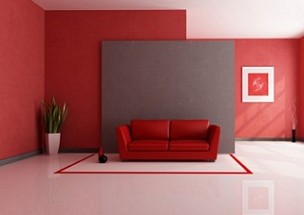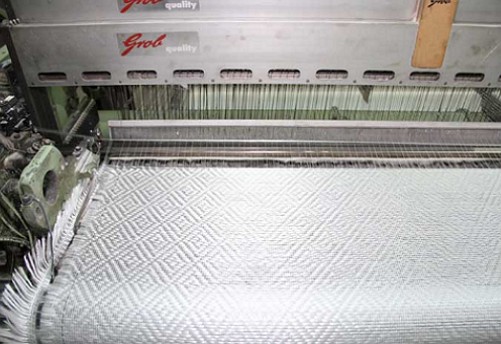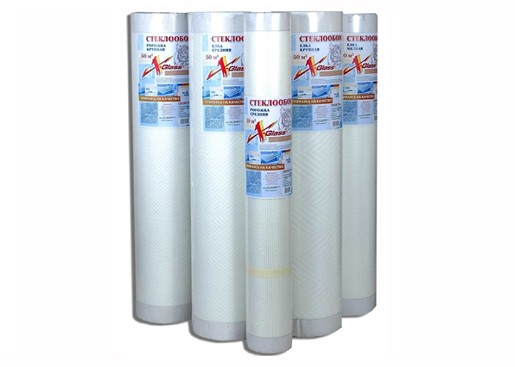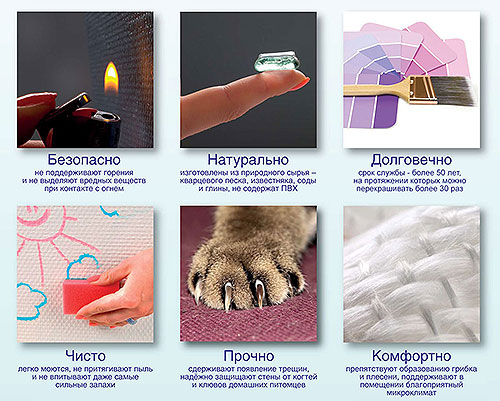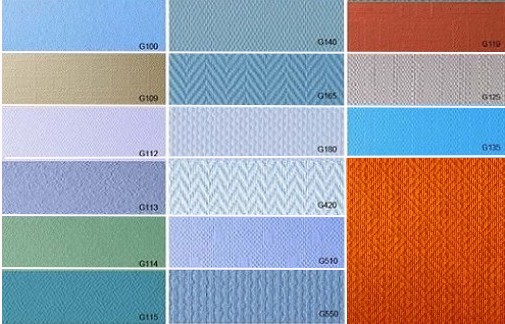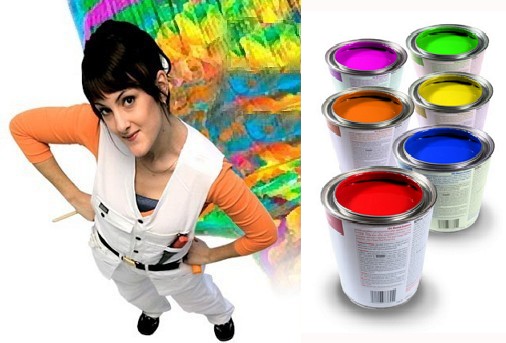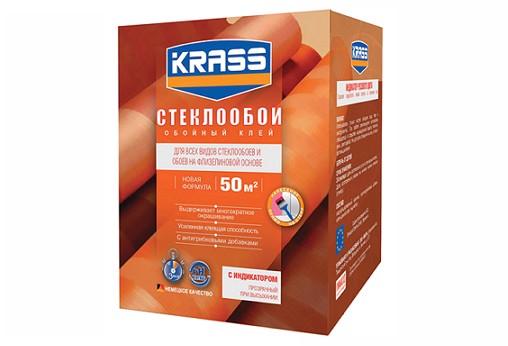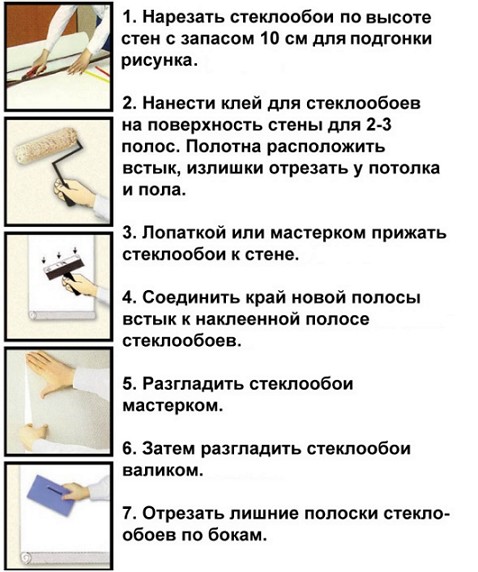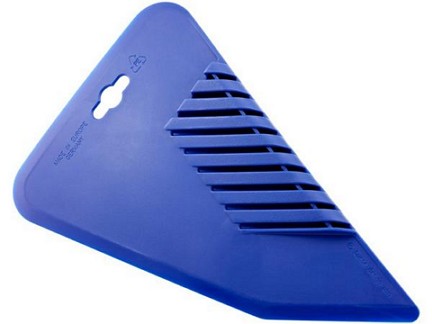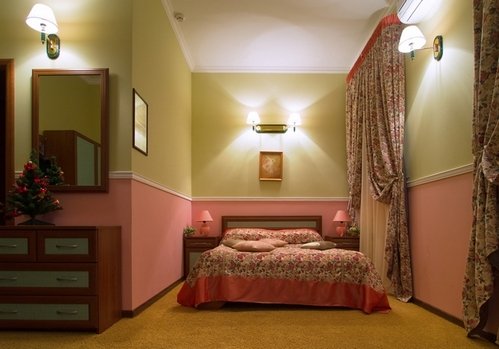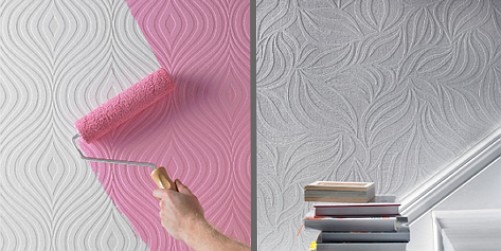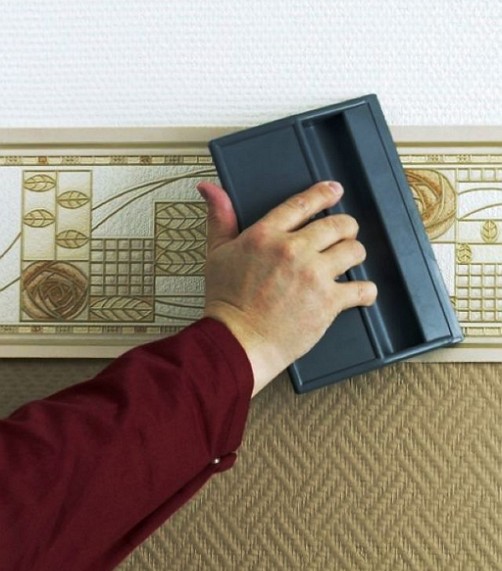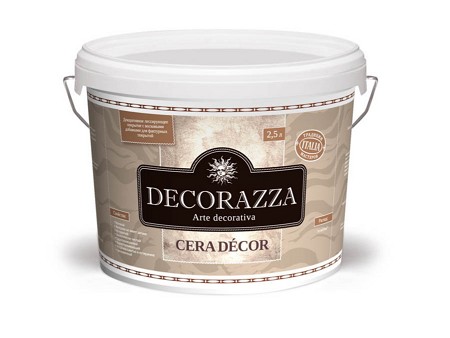For creative people and amateurs to experiment, glass pavements are of great interest. The ability to paint the wallpaper in the desired color and shade literally on the wall. It is enough to paste such wallpaper once and start to update the interior design from time to time with a new color solution. Steklooboi in the interior is an excellent and real opportunity for own creative work, beautifully speaking - a bright and brilliant investment in the future.
Content
What is fiberglass wallpaper?
The appearance of fiberglass and fiberglass in European countries in the thirties was taken with skepticism. "How, the glass in the wall cover?" - This was something the skeptics and pedants used to sound like, but it was not even half a century later when glass works became widely used in Germany, France and other developed countries of Europe.
Today, the use of fiberglass as a roll coating for painting is common. Steklooboi, what is it and why do developers like to work with dense material impregnated with a special compound? Carefully considering the photo of glass coverings in the interior, we can conclude: the surface of the walls with this roll becomes an even, uniform structure.
And, mind you, to create a stable surface do not use kilograms of laboriously applied plaster or special aquamachines. It is enough to buy a roll and glue for fiberglass wallpaper, apply wallpaper to the prepared surface and paste. In addition, to save time, it is recommended to use a fiberglass paint, which is also a cloth with a density of up to 50 g / m2.
By the way, the difference in paint glass fiber and glass sheets is in manufacturing technology. Fiberglass paint is a non-woven material, and glass piles, on the contrary, a woven fabric with an elegant geometric pattern. Fiberglass is a strong and non-toxic material, the tensile strength reaches 100 N / cm. Steklooboi have a density of 115-190 g / m2, depending on the type.
Types of glass wall coverings
The structure and density of glass pane are distinguished into the following types:
- smooth, holders of a smooth textured surface and low density
- relief, with a dense structure and a variety of patterns.
Regardless of the type of structure of glass walls, the base color of the canvas is white. The relief texture is simple (glass matting) and complex symmetrical jacquard weave.
All types of fiberglass and fiberglass are designed for various surfaces: concrete and brick substrates, plasterboard, fiberboard and chipboard.
Steklooboi can be used:
- as a reinforcing layer with subsequent finishing coat
- directly as a finishing coat with the painting of the outer layer with water-dispersion paint.
Let's tell, that the paint for стеклообев, on responses of buyers, it is possible to use on a disperse and акриловой basis. But preference is best given to the unique in composition paint impregnation Novelio®, which gives the wallpaper material softness and mobility.
Glass interiors in the interior of the apartment
The success of the use of relief surfaces in the creation of a new interior is embedded in the intertwining of fiberglass walls. Manufacturers initially created wallpaper specifically for the possibility of painting and subsequent repainting in the desired color.
Recall that colored fiber for the production of wallpaper is an expensive material, so to reduce costs, it is preferable to opt for a neutral (white) color. Woven structure and geometric patterns "matting", "rhombus" and "herringbone" are able to give the interiors of hallways, bedrooms, living rooms and children a new sound.
A well-chosen color and properly painted wallpapers will help create an exclusive of your design, confusing acquaintances and friends when looking at rooms: "Is it glass?". Be sure, yes, that's them. The main thing is to choose the right glue, paint and learn the basic techniques for decorating glass walls.
Glue and paint for fiberglass wallpaper
For gluing of heavy wallpaper, and glasswools refer to this type, use a dry mix or ready-made glue solution.
how to paste and paint glass walls
The process of self-adhesive labeling and painting of glass walls consists of the stages:
- preparation of the working surface
- application of adhesive to the surface of the substrate
- canvas placement
- painting wallpaper.
Before pasting, the work surface is cleaned of old wallpaper and dust. Rusts, cracks and seams shpaklyuyut traditional way. If the surface is porous and absorbs moisture well, it is primed with a dilute glue solution for fiberglass wallpaper. It can be an adhesive compound of Nortex. The surface under the label must be firm and smooth.
The glue should be applied to a surface area, marked under a piece of wallpaper. The canvas is laid on the wall by wet glue and smoothed according to the principle of gluing the usual wallpaper: from the center to the edges and from the top down. The subsequent fragment of the web is laid back and forth. Experts recommend the first cloth to place and adjust the position using a plumb bob.
For inconspicuous joining of two canvassing and smoothing edges, it is preferable to make one movement with a pressure plastic spatula. After the wallpaper is pasted, the wallpaper is smoothed over the entire surface, removing excess glue and air.
paint application techniques
There are several techniques for applying paint to the glassy surface, confirmed by practice:
- traditional painting using a roller
- gluing decorative curb
- doctor technology
- screen printing.
It is important to remember which effect you are trying to achieve. The outer surface of the wallpaper can withstand up to 10-12 repaints. Using different colors and application techniques, you can create a matte or glossy wallpaper surface and highlight the texture.
roller painting
The color of the wallpaper is produced after the glue solution has dried completely, in time it takes 2-3 days. The chosen paint and varnish product (water-dispersion and latex paints) is applied directly to the wallpaper. The roller is saturated with paint and squeezed. The application of the paint is carried out in a conventional manner by moving the roller in one plane to form a layer. The next layer is applied next to the overlap on the edge of the previous one.
bonding
To give a variety of a one-ton surface or two, use a decorative border, which is glued to the glue intended for glazing of glass walls. In this case, the adhesive will act as a primer layer.
doctor technology
For the doctor's spraying technique, a special tool is needed - a squeegee, which allows to remove excess paint applied. Squeegee technique is preferable for creating accentuation of the texture of the wallpaper. The first tone is applied with a squeegee in one layer, then with a selected second tone, the dressing is made.
Decorative additives are introduced into the coating layer, the main purpose of which is to fill the depth of the texture of the wallpaper. The tone of the glaze is chosen lighter or darker than the base color. Then, without waiting for the drying of the second paint layer, remove the top layer with a spatula. The squeegee is placed at an angle to the surface and the paint layer is removed by smooth uniform movements. Ideally, you should get a surface with a designated relief structure. More information on the techniques for decorating glass walls is shown in the video.


